Wednesday 18th and Thursday 19th May 2022
Yesterday morning had been taken up with laundry but on Wednesday we booked places on the daily ‘hop-on-hop-off’ coach. This takes passengers into the closest town for sightseeing and you are provided with a map of the stops and the local places of interest.
Our destination was Point Coupée, which is apparently one of the oldest settlements along the Mississippi River. As we boarded the coach staff, presumably from the local tourist office, handed out environmentally friendly reusable bags branded with the town’s name in the hope that people would spend some of their tourist bucks here. The name Point Coupée is derived from its position on an oxbow curve and means, unsurprisingly, ‘the point of the cut off’ in French.
Someone at a garage/petrol station, now closed, clearly was a Pixar fan with a sense of humour.

The lake which was created here by the oxbow when the course of the river changed is called False River and there were some attractive lakeside properties, many with their own little jetties.
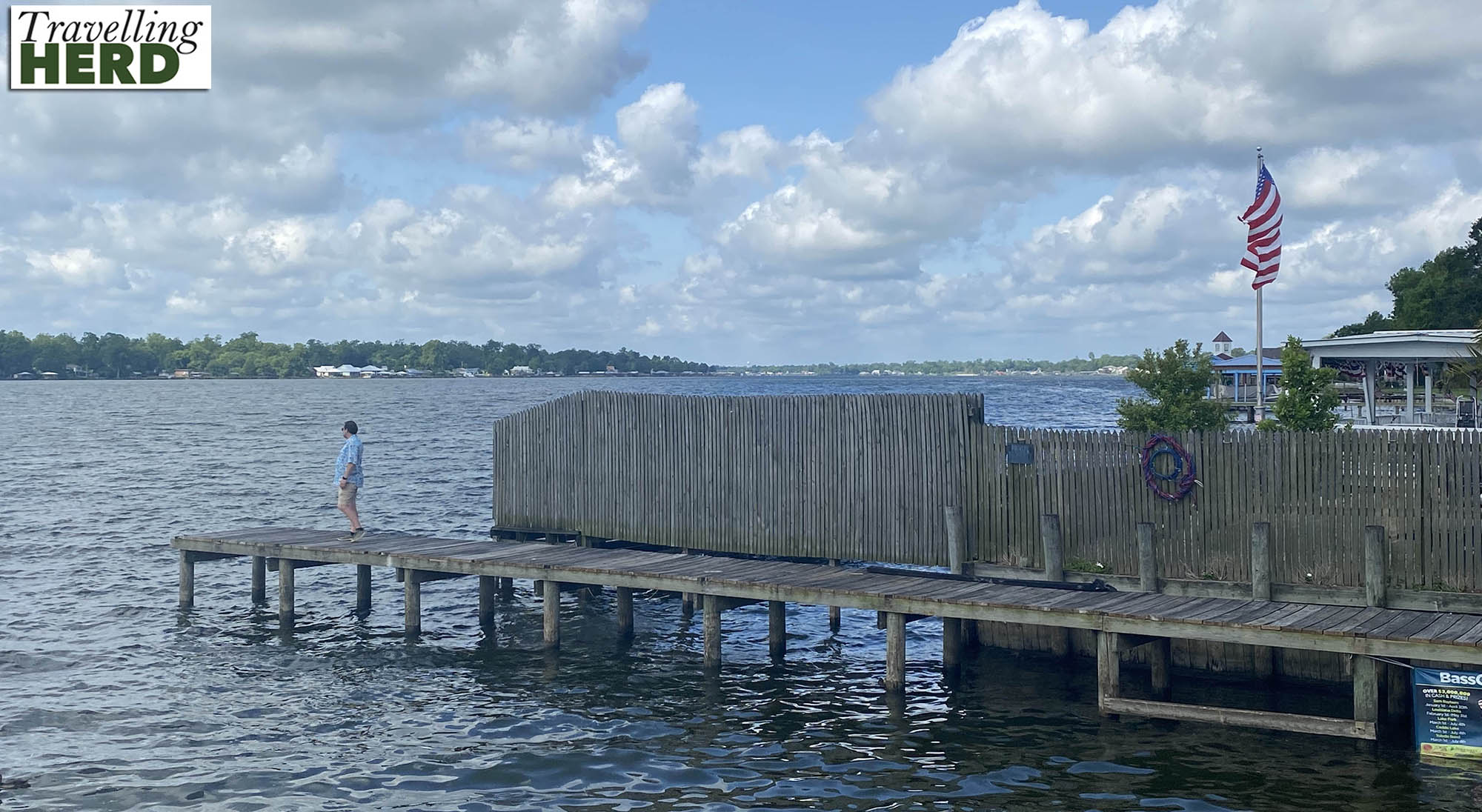
The stops on the hop-on-hop-off coach were not very far apart and we walked between them rather than waiting for another bus, passing the St Mary of False River Catholic Church.
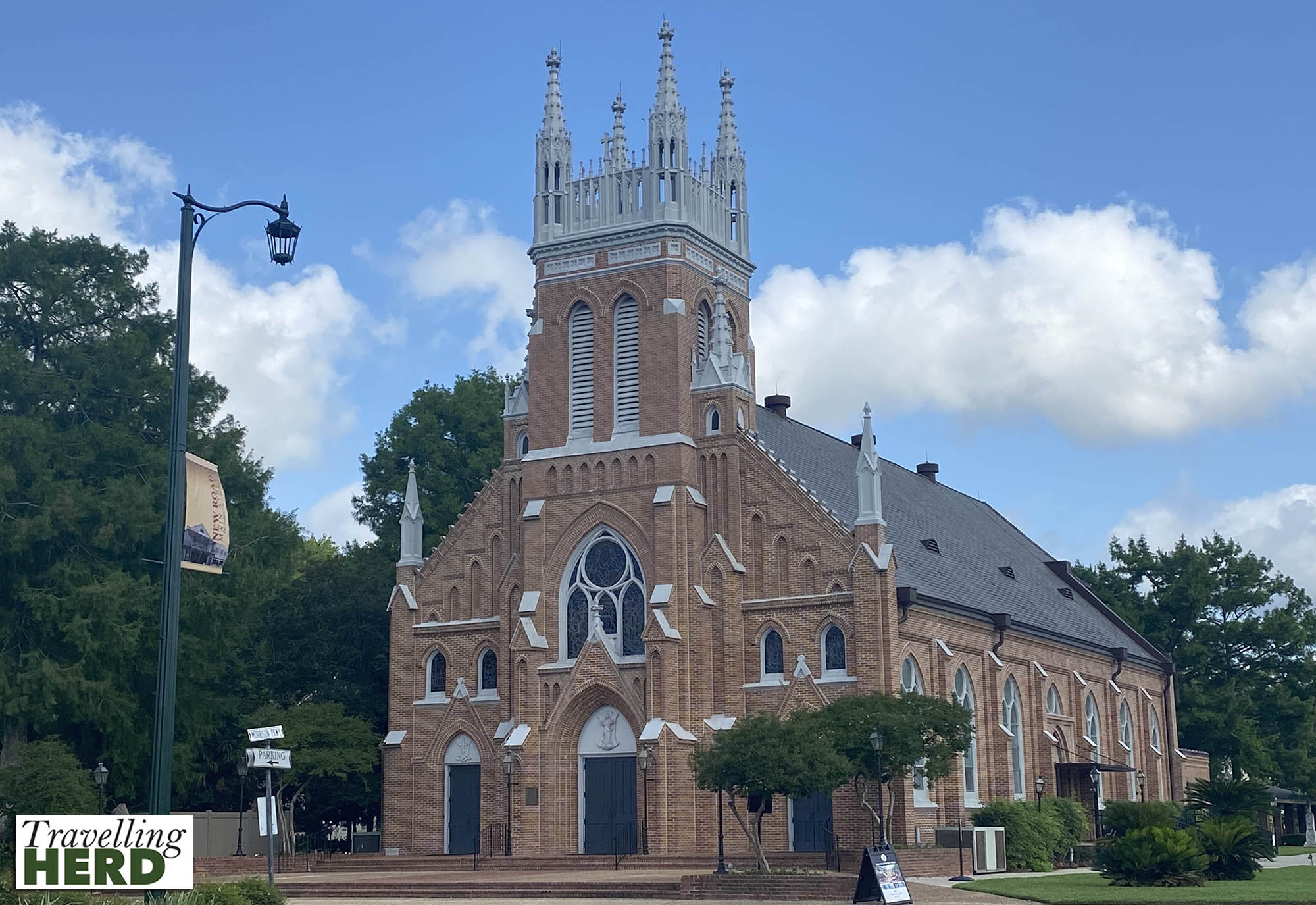
It is perhaps indicative of the number of attractions in the town that two [undoubtedly old and picturesque] oak trees were included in the guide’s commentary onboard the coach.
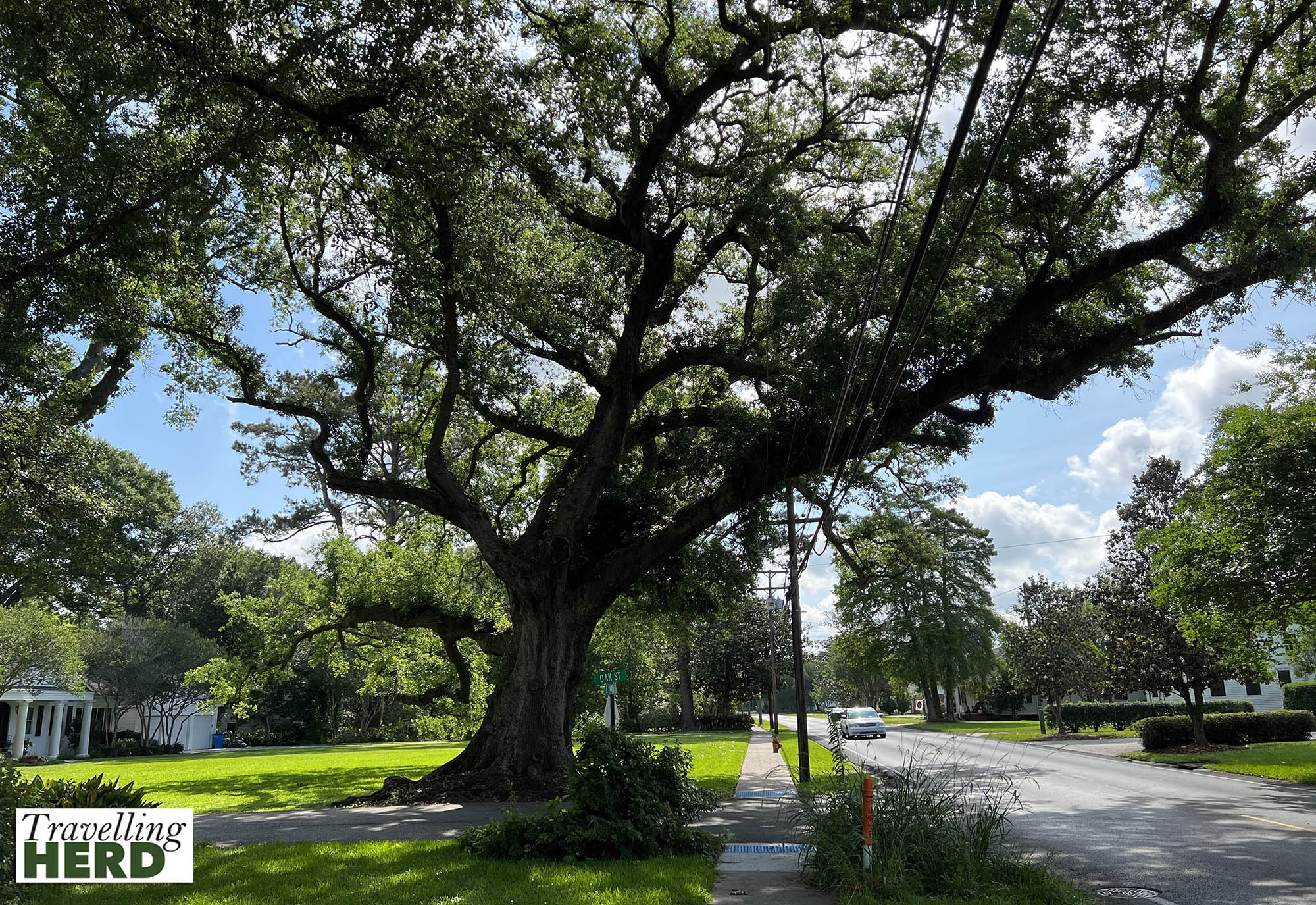
Paddle steamers, like narrowboats, are flat bottomed, with no keel so that they can navigate in relatively shallow waters.

The shallowness of the draft was very apparent when we moored by the bank. We were told that the American Queen has an eight foot draft and that the average depth of the Mississippi River is between nine and twelve feet. So, not much wriggle room.
There were reports that the river was higher than usual and the semi-submerged trees seem to bear this out [see Video of the day].

Later we tried the River Grill and Bar at the stern, near the pool, which was pleasantly shaded by a canopy. The name was inaccurate however as there was no grilling taking place, other than perhaps of fair-skinned people such as Matilda who were not used to the sun and the 34 degree heat. The bar staff were obviously called upon to explain repeatedly that the grill was not in use on this cruise and were lobbying for the name to be changed.
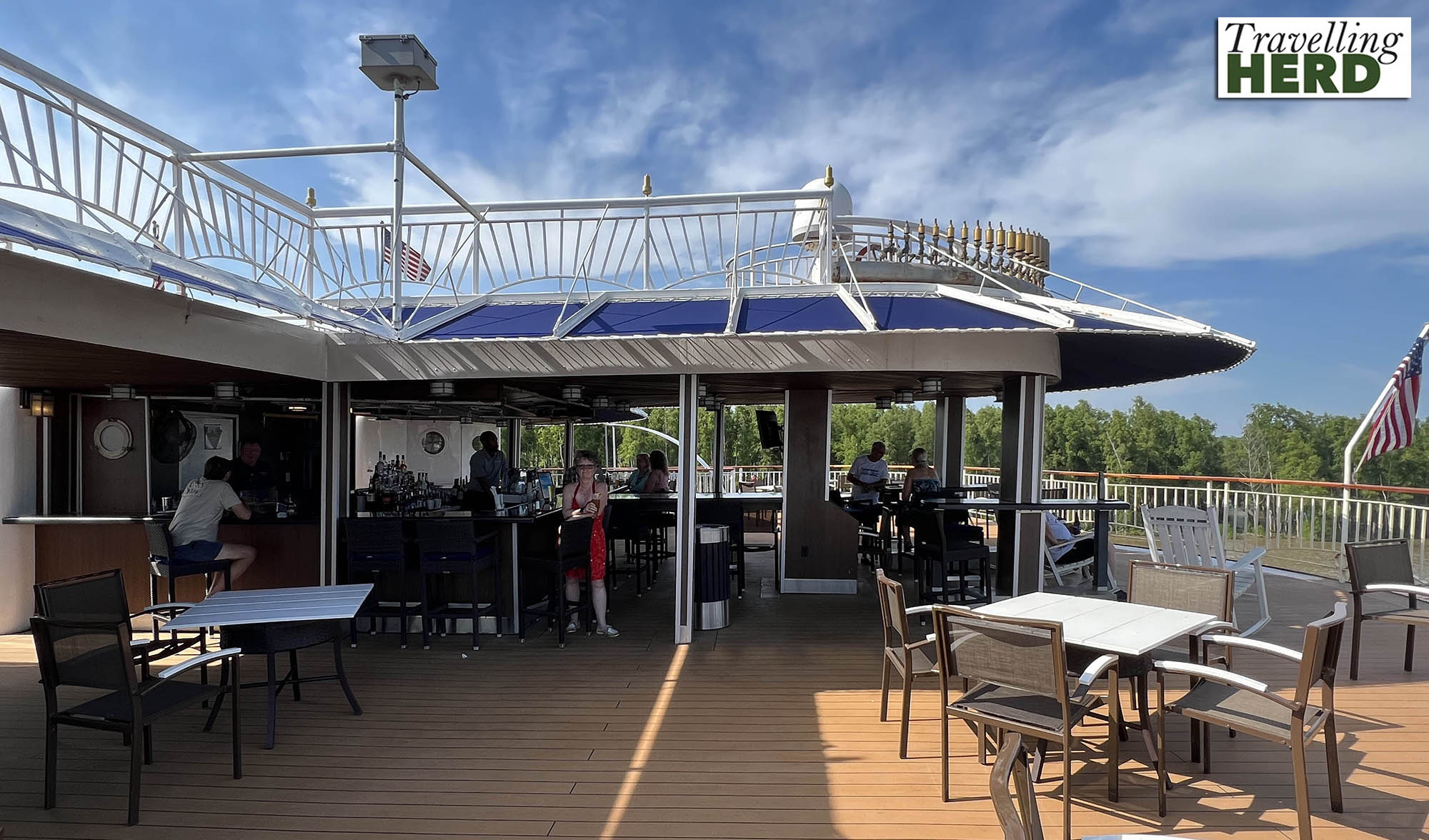
Matilda decided that you are never too old to dress like a slice of watermelon in such temperatures.
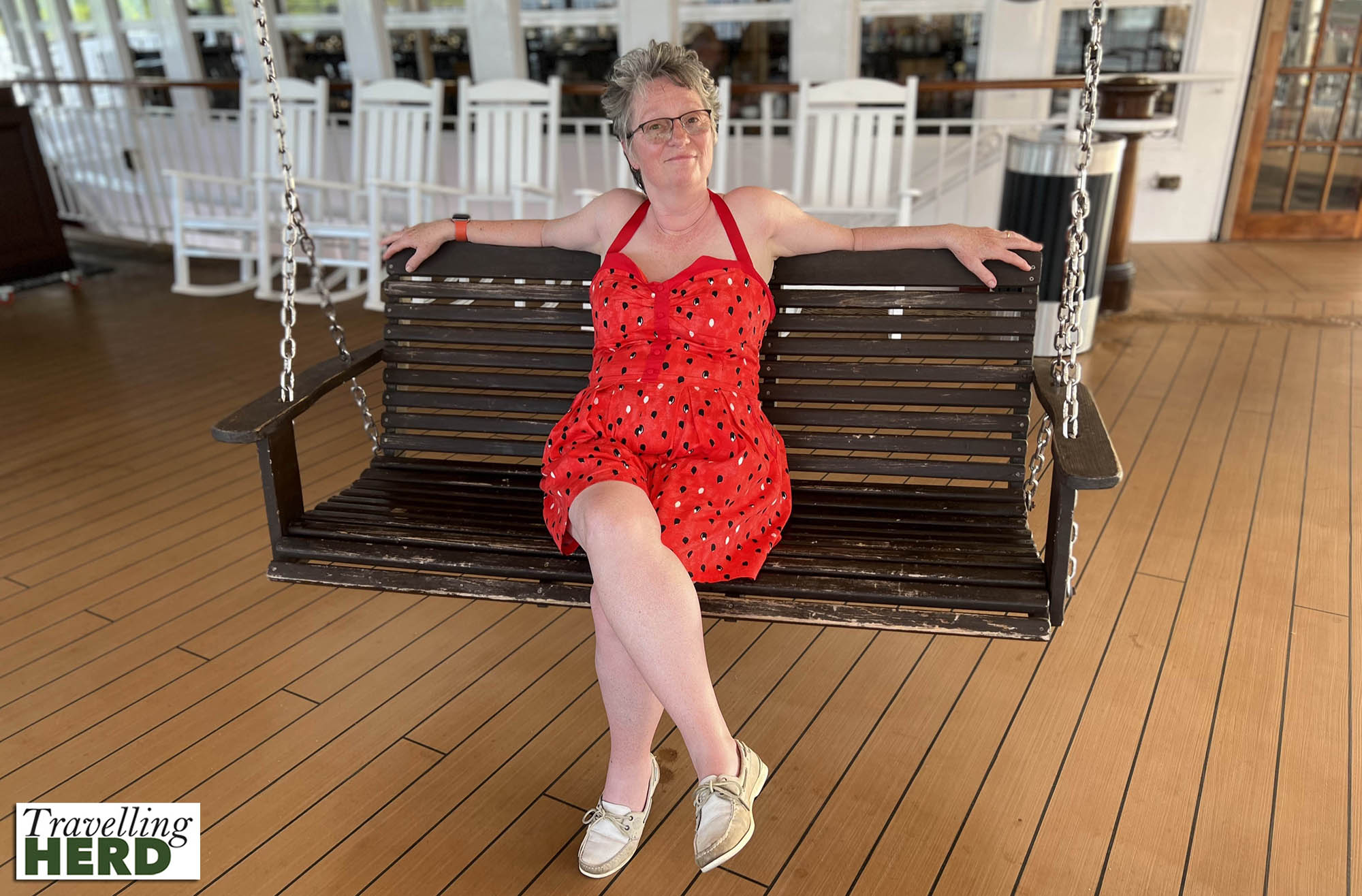
The tugs which we pass on the river are moving huge cargoes comprising multiple barges.

We are finding that there is almost always a picturesque sunset on the river.
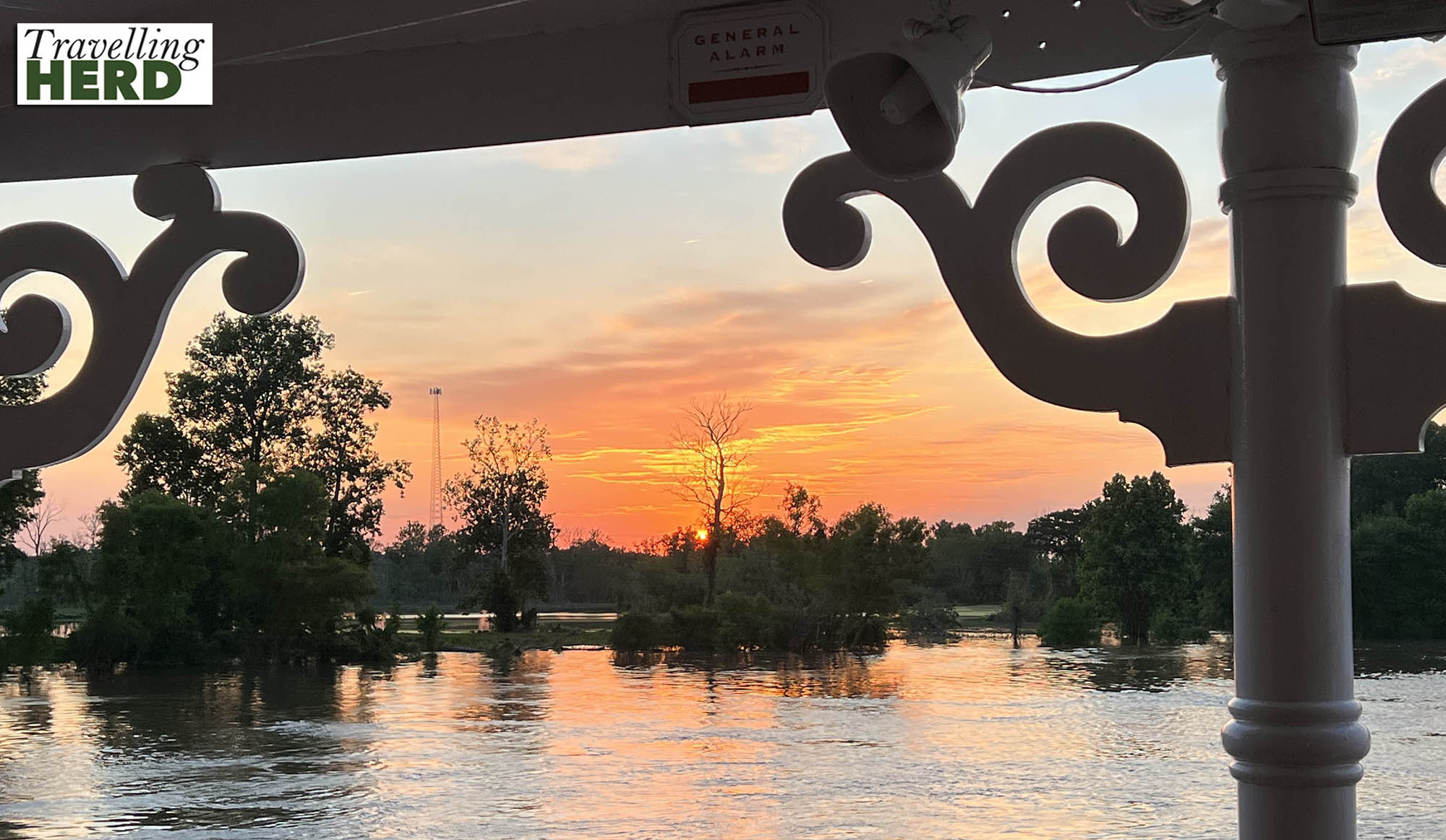
Next day we had booked a trip to a cotton plantation in the afternoon and seats on the hop-on-hop-off coach to Natchez for the morning. Natchez is named after the Natchez tribe of American Indians who occupied the land in the 17th and 18th centuries. The Natchez were injudiciously friendly and welcoming when French settlers arrived and were ultimately rewarded by being killed or enslaved.
Without denigrating anyone’s history or suffering and in fact, aiming to recognise past injustices, it does seem that we are regularly being told about the African American story but than the American Indians are not being given a voice in the same way.
We decided to stay on the coach until the furthest attraction and then walk back, partly to avoid the majority of the rest of the people on the coach who all got off at the first stop.
The town is proud of its history and architecture, though hopefully not of its treatment of the Natchez, and Matilda was quite taken with the canon in this front garden.

The end of the line was Stanton Hall, a Greek Revival-style house, which occupies an entire city block and was built in 1857. Stanton was an Irish immigrant who became a wealthy planter and cotton merchant and originally named the house ‘Belfast’. However, the house was briefly home to Stanton College for young ladies when the name was changed to Stanton Hall.
Today it is owned by the Natchez Garden Club and there were various people in period costume to welcome us and explain about the families who had lived there and the artefacts in each of the rooms. The woman who welcomed us to the property certainly felt an affinity with the plantation owners and talked almost as though she were a direct descendant. Perhaps she was.

The construction of St Mary’s Basilica was begun in 1842 as a cathedral in the newly established Diocese of Natchez, and St. Mary retained its cathedral status until 1977. It has subsequently been designated as a minor basilica which apparently brings with it certain benefits.
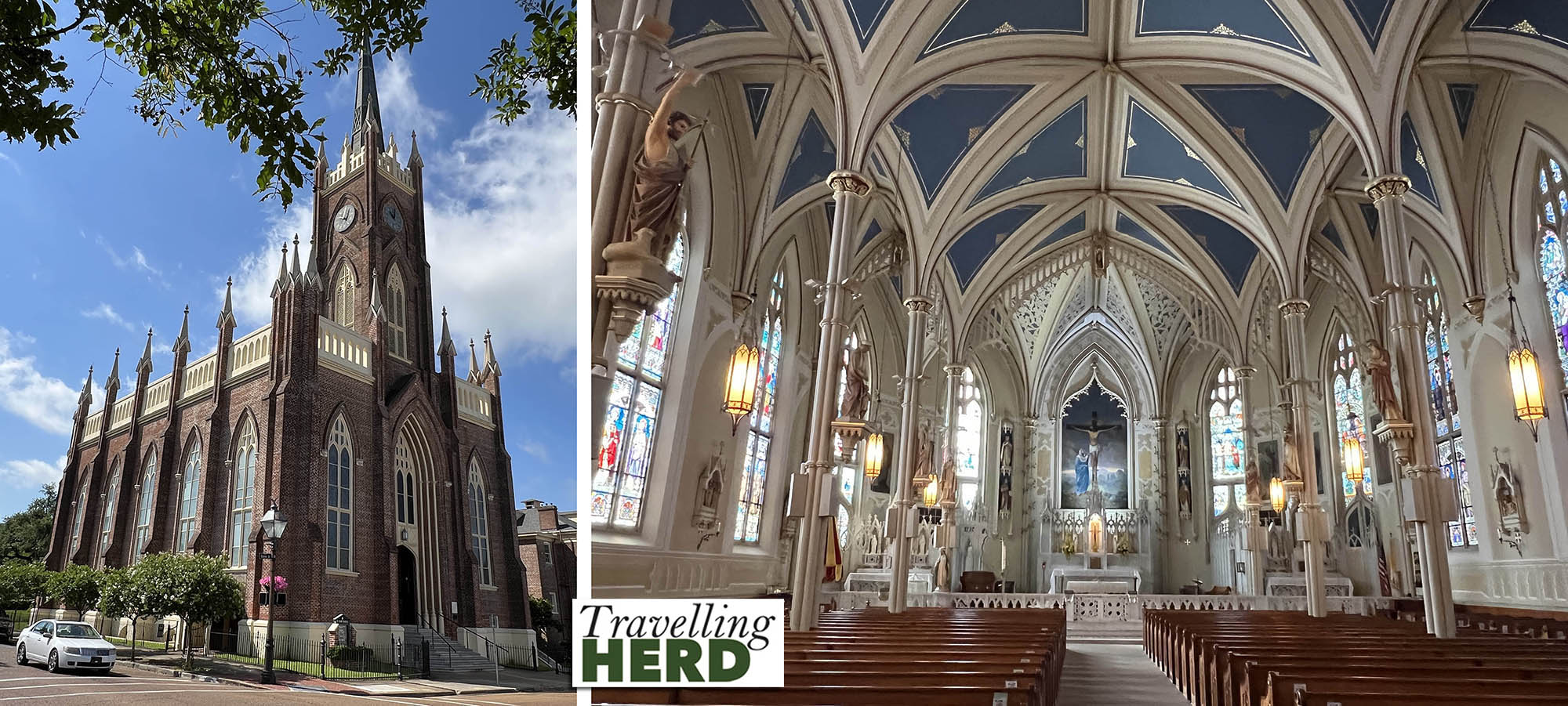
Magnolia Hall is also sometimes referred to as the Henderson-Britton House. Thomas Henderson was a wealthy merchant who commissioned the mansion and had the building painted to match the brownstone houses which were deemed to be desirable residences indicating a certain level of wealth in New York.
Magnolia Hall was built in 1858 before the outbreak of the Civil War but it is said that during the Civil War, a canon ball was fired and it passed into the kitchen [seen on the left in the photo] and landed in the soup. Who knew canons could be fired with such accuracy?
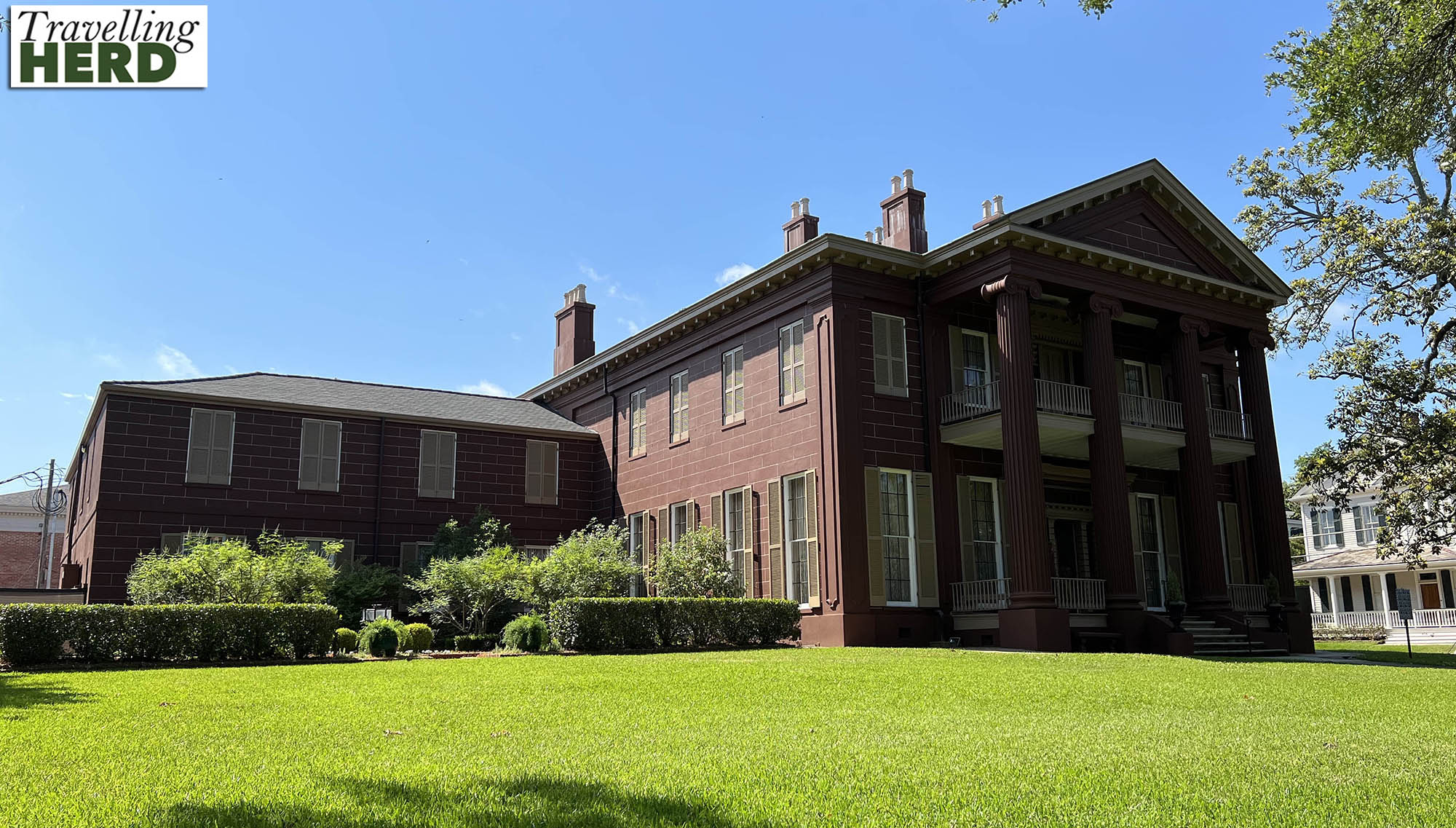
Inside the mansion, the ground floor has been restored to its former glory by the Natchez Garden Club. There is a costume collection on the second floor some of which were worn during various pageants and tableaux and are reminiscent of the May Queen costumes from our home village, including dresses labelled as Placard Bearer and, more unfortunately, Big Maypole.
Despite being a slave owner, Thomas Henderson served as Vice President of the American Colonisation Society [ACS], an organisation focused on repatriating free people of colour and emancipated slaves to Africa. The ACS bought land in west Africa for this purpose and a colony was founded at Cape Mesurado in 1821 in what was to become Liberia. Unfortunately the earliest settlers faced difficult conditions and just 1,819 of the original 4,571 emigrants who arrived in Liberia between 1820 and 1843 survived.

Having returned to the boat for a light lunch, we then set off on a tour to learn about the Story of Cotton in the American South at the Frogmore Plantation.
Cotton had recently been planted and the green shoots of the new crop could be seen in some of the fields we passed. The harvest will take place between July and November depending on the weather.
The Frogmore Plantation is still a family run business and when we arrived we were greeted by the owner who explained how cotton is grown, harvested and processed.
We had not expected that the coach would drive right into a modern cotton processing plant where a video was being projected onto the machines to make it appear as though they were in operation as we were visiting out of season.

We were then taken into an old building to learn more about the history of cotton. The plantation owner had quickly changed into period dress to explain how the industry had developed over the years.
She was accompanied by two singers, one of whom was descended from the family’s plantation slaves and whose soulful rendition of Swing Low Sweet Chariot gave Matilda goosebumps whilst also glaring at Robert to stop him doing the England rugby supporters’ actions to the song.
The slave quarters we saw were predictably spartan, especially in contrast to the mansions we had visited in the morning.
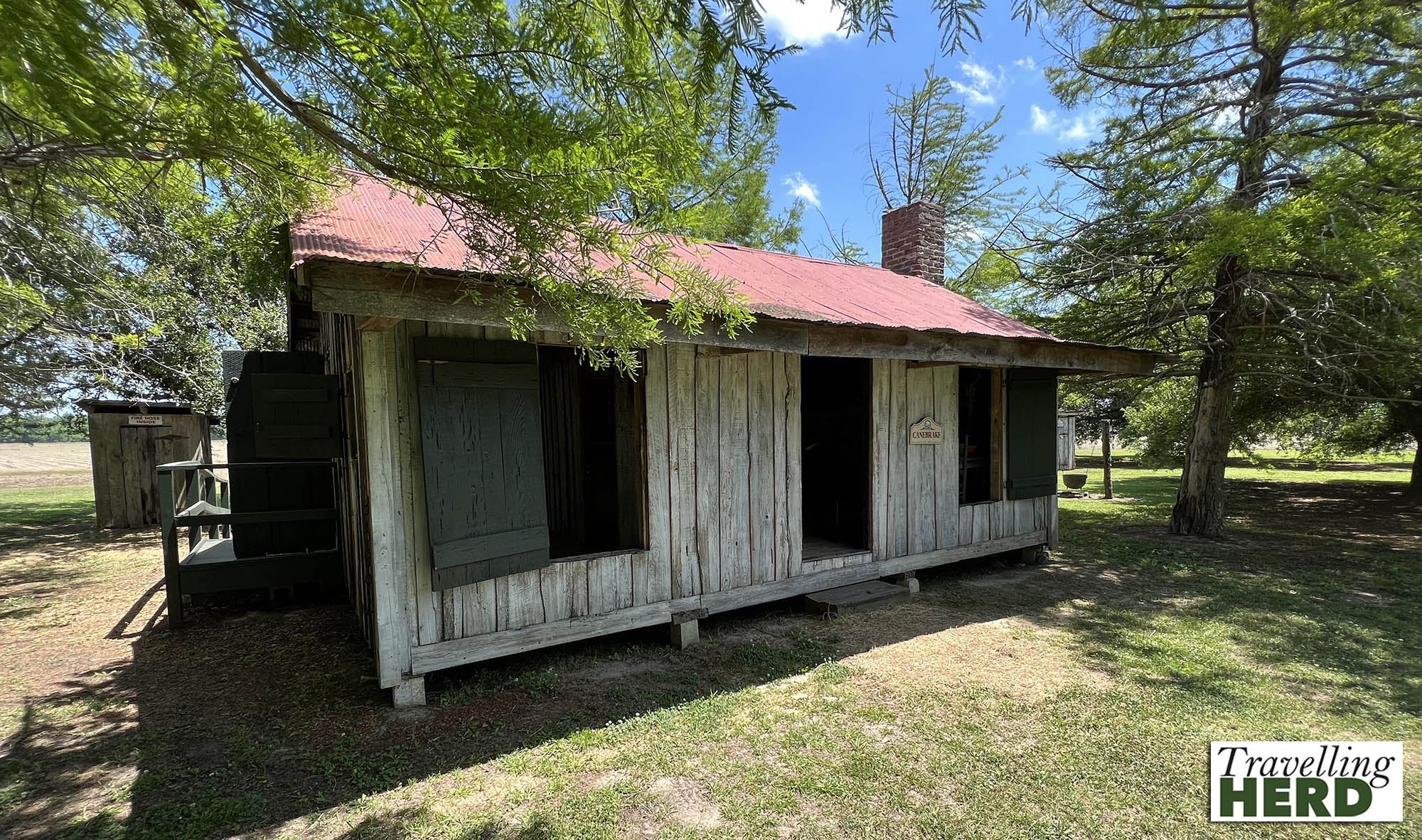
We were also shown a cotton gin which heralded the start of the industrialisation of cotton growing. Robert was disappointed to discover that in this context cotton gin is a shortened form of cotton engine and that he would not be offered any samples to taste. At this plantation/factory they currently make their money by using the modern gins to remove the cotton seeds from the cotton bolls. They collect the bolls [with seeds] from the farmers free of charge, remove the seed free of charge, and then return raw bails of cotton back to the farmers free of charge. Robert had assumed that the seeds were were then used to make gin, whereas actually some are retained for planting whilst some are used to make cotton seed oil which is used as a cooking oil for potato crisps.
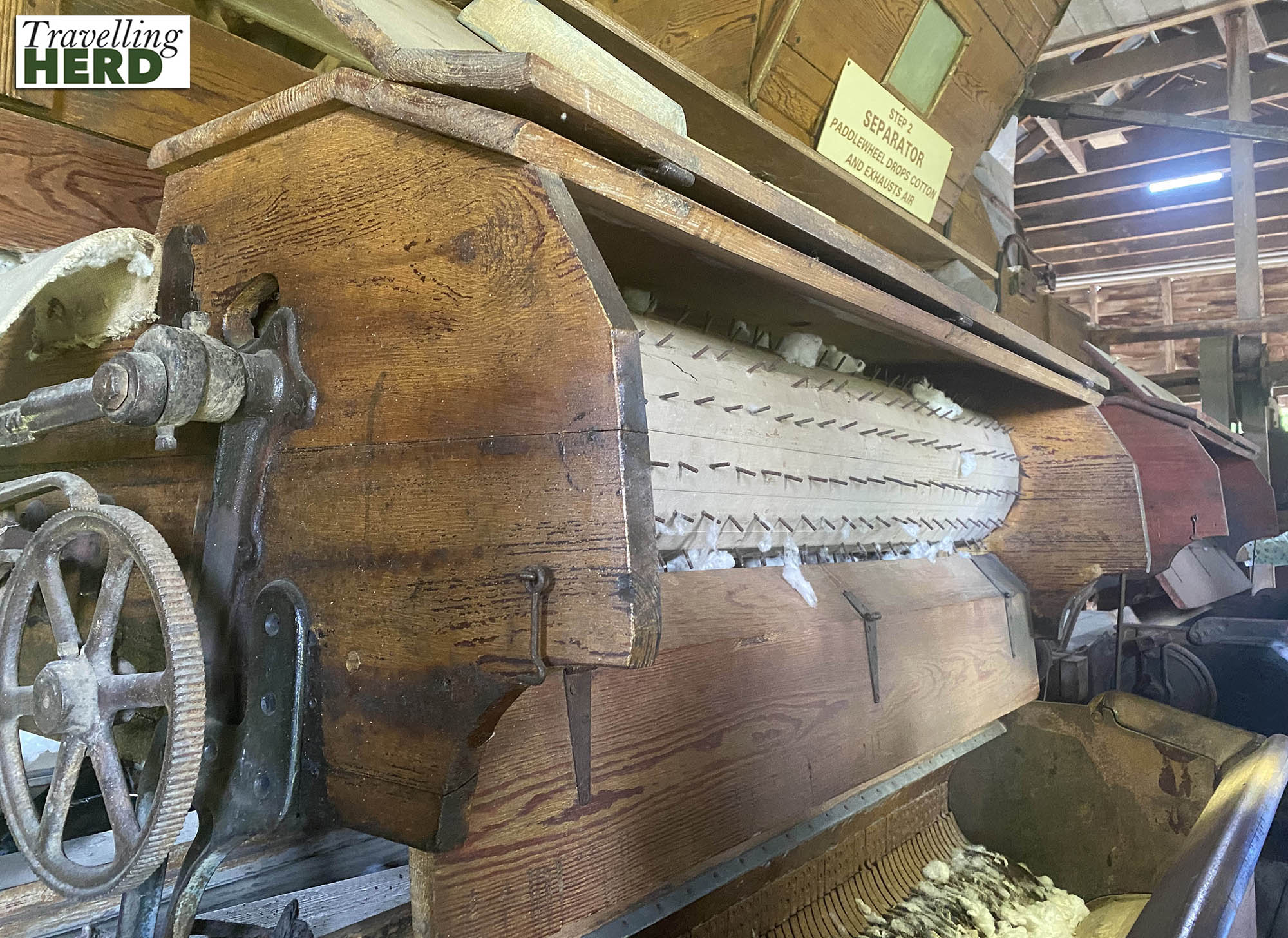
On the route back to the boat we visited Longwood, the largest octagonal house in the America which is also sometimes known as Nutt’s Folly. Designed in 1859 for cotton plantation owner Haller Nutt, it has a distinctive onion shaped dome and is currently owned by the Pilgrimage Garden Club.
Building work was stopped in 1861 at the start of the American Civil War. Haller Nutt died in 1864 having lost most of his vast fortune, which included 800 slaves, and the house was never finished. A total of 32 rooms were planned but only nine on the ground floor were ever completed although his wife and family continued to live in these rooms after his death.
No photos were allowed in the downstairs living quarters but the tour also includes the next storey.
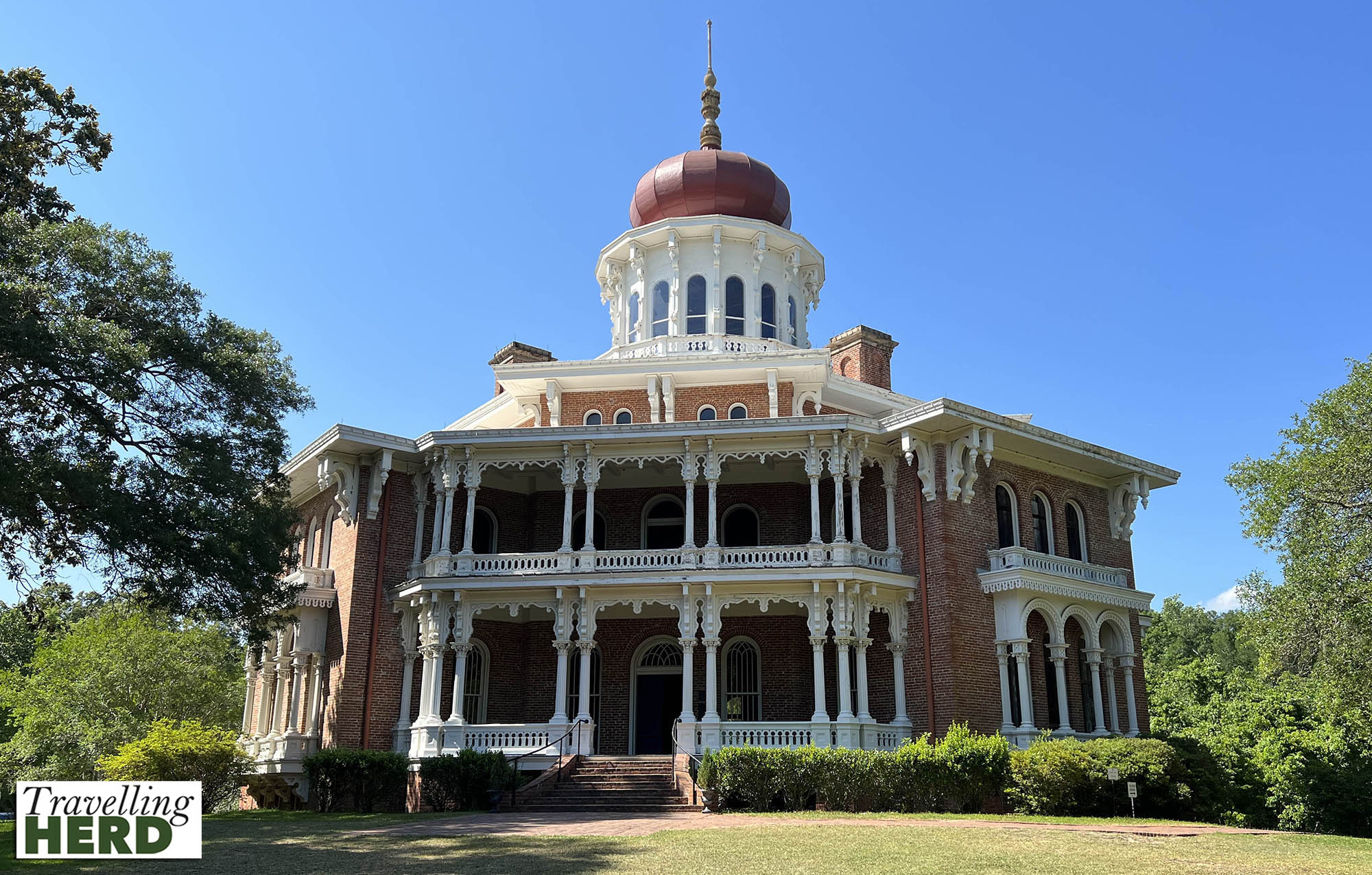
Here you can see the shell of the building and the essential structure of the cupola. It must have been strange indeed for the family to live here, with this decaying reminder of past wealth above their heads.
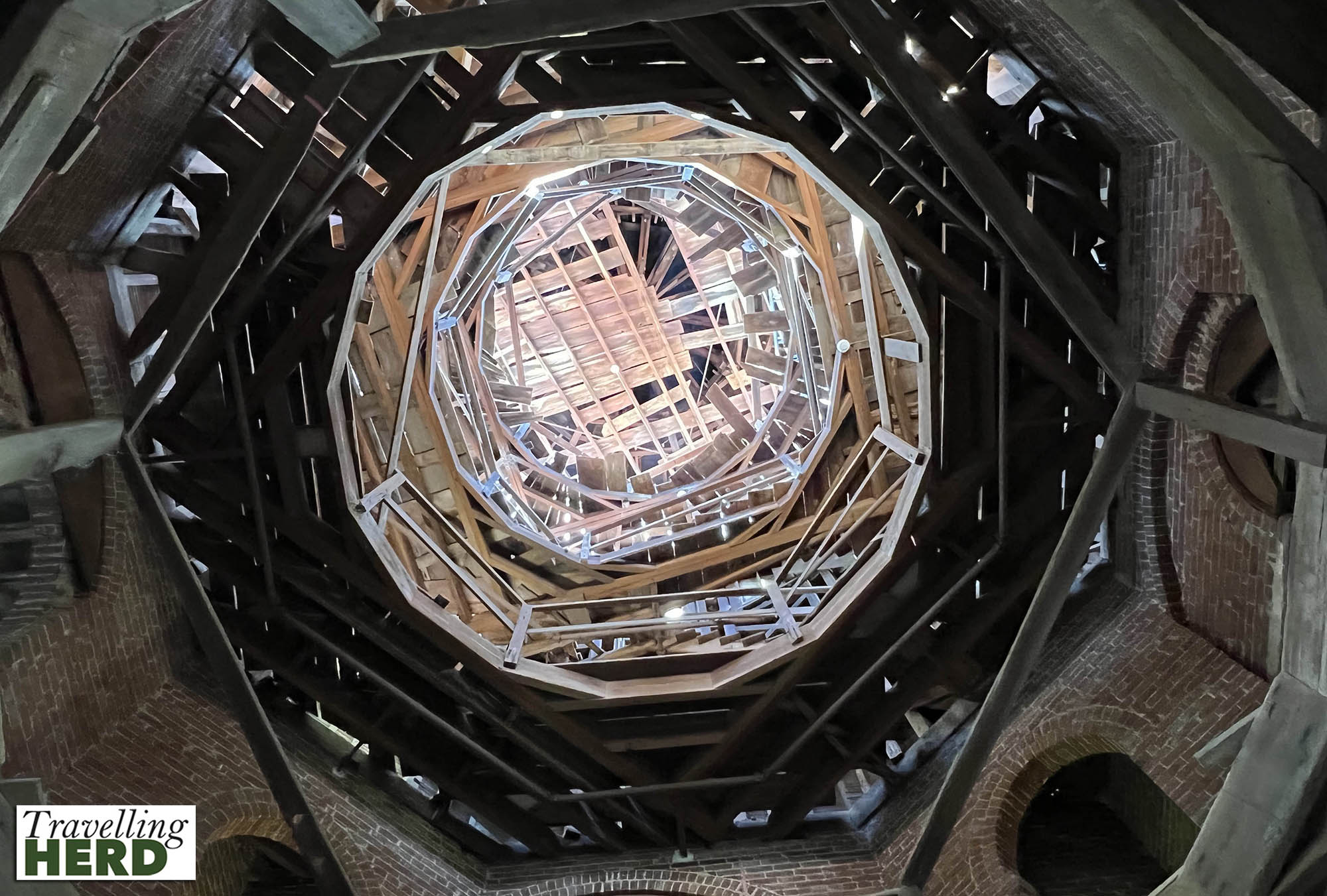
A carriage remains in one of the outhouses. There was also a helpfully placed sign so that you could find the best spot for a selfie – see Selfie of the day.
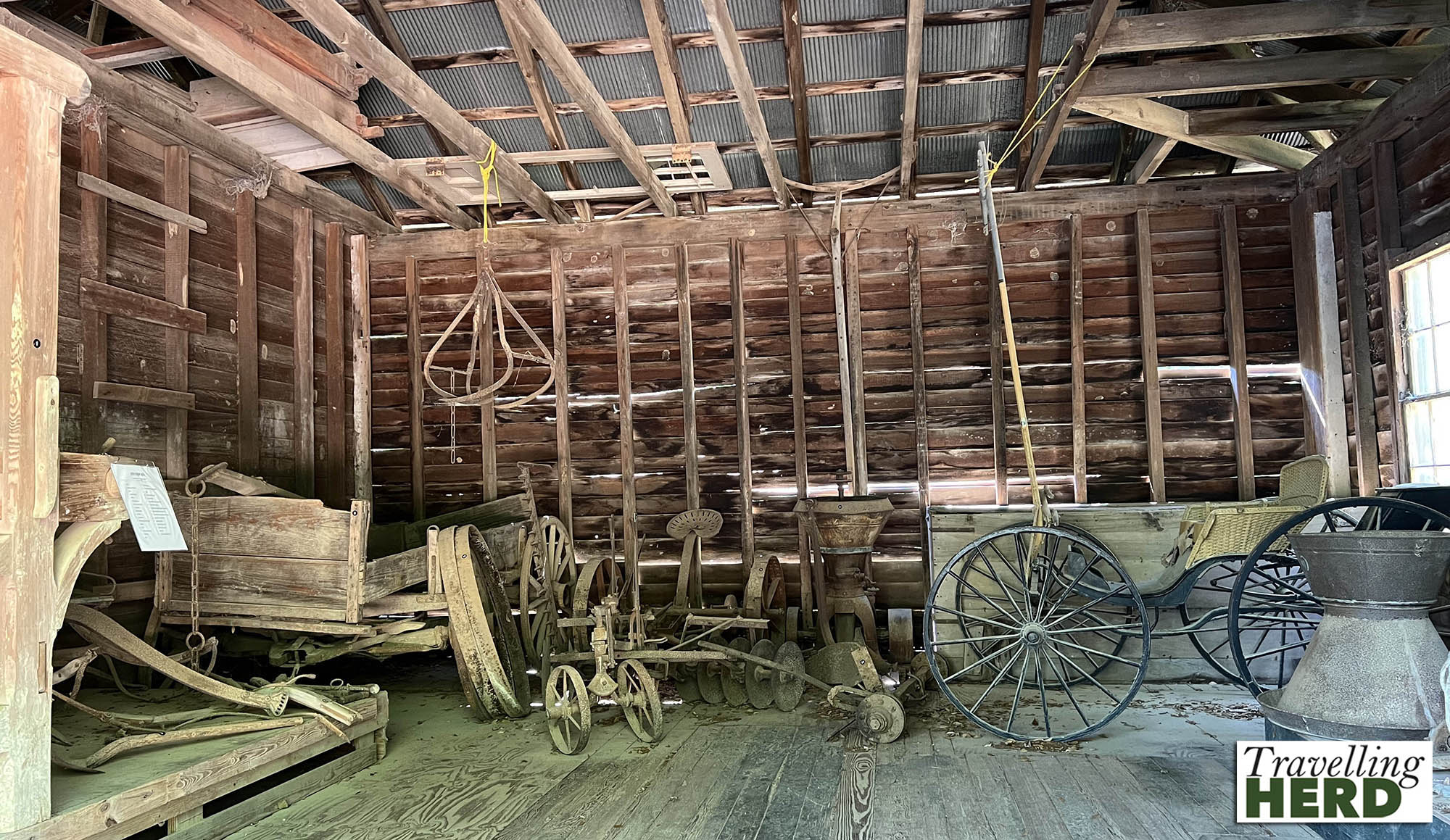
As far as we could ascertain, the Pilgrimage Garden Club and the Natchez Garden Club seemed to be rival versions of the WI with an interest in preserving historic buildings.
Back on board, Matilda felt she needed to seek out some shade.
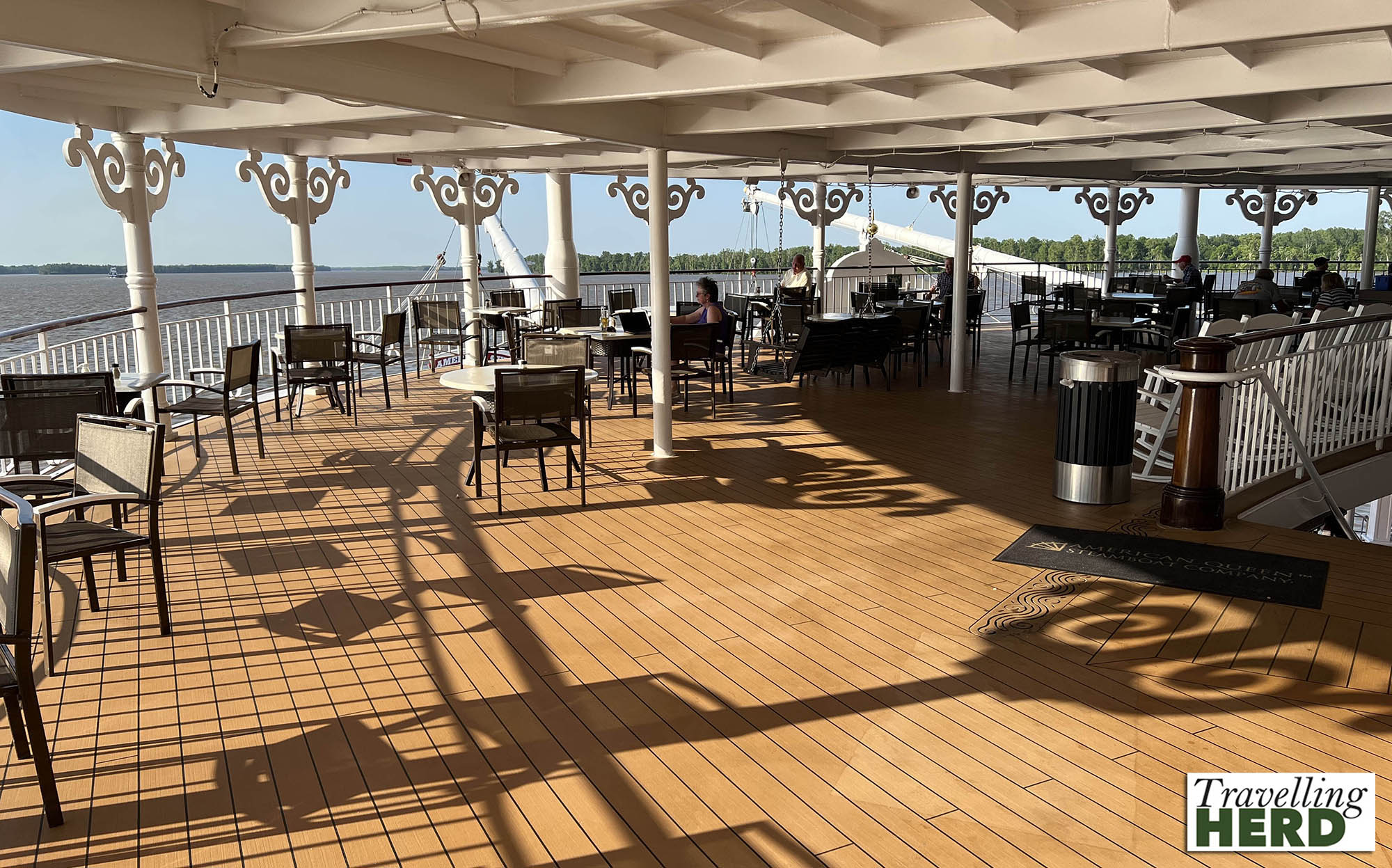
Video of the day:
Selfie of the day:
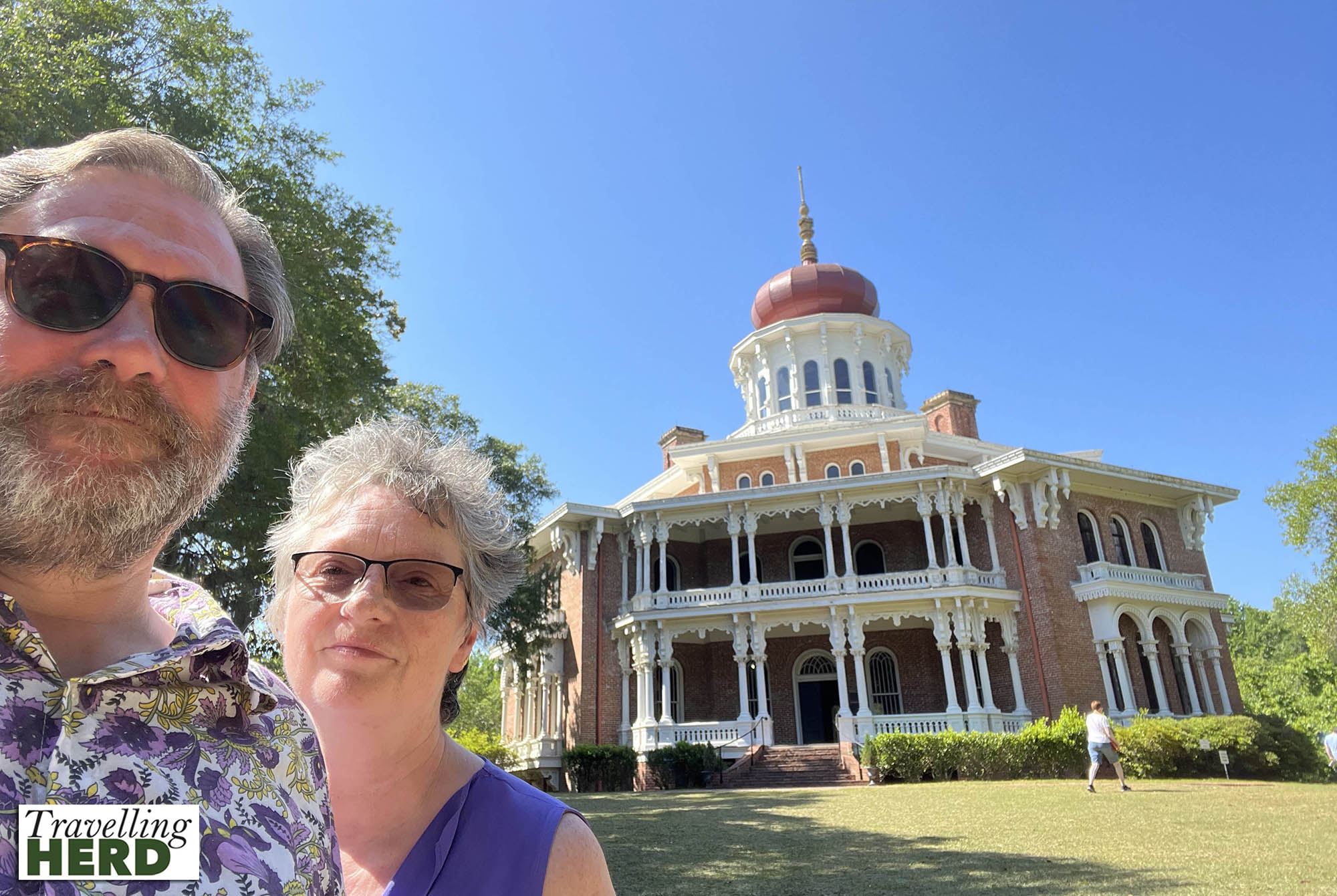
Route Map:






